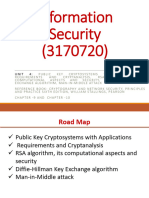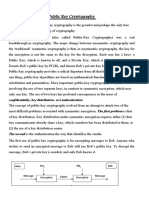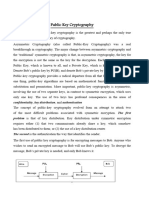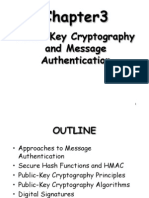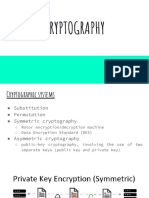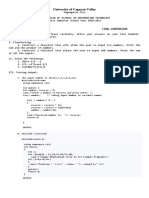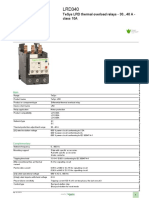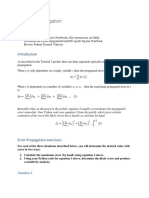0% found this document useful (0 votes)
16 views15 pagesUnit 3part B
Asymmetric key cryptography, also known as public key cryptography, utilizes a pair of keys: a public key for encryption and a private key for decryption, addressing key exchange and trust issues in secure communications. Key algorithms like RSA and Diffie-Hellman facilitate secure key exchange and digital signatures, while elliptic curve cryptography offers efficient key generation. Public key cryptosystems are essential for confidentiality and authentication in various applications, though they are vulnerable to attacks such as brute force and man-in-the-middle without proper safeguards.
Uploaded by
y rajaCopyright
© © All Rights Reserved
We take content rights seriously. If you suspect this is your content, claim it here.
Available Formats
Download as PDF, TXT or read online on Scribd
0% found this document useful (0 votes)
16 views15 pagesUnit 3part B
Asymmetric key cryptography, also known as public key cryptography, utilizes a pair of keys: a public key for encryption and a private key for decryption, addressing key exchange and trust issues in secure communications. Key algorithms like RSA and Diffie-Hellman facilitate secure key exchange and digital signatures, while elliptic curve cryptography offers efficient key generation. Public key cryptosystems are essential for confidentiality and authentication in various applications, though they are vulnerable to attacks such as brute force and man-in-the-middle without proper safeguards.
Uploaded by
y rajaCopyright
© © All Rights Reserved
We take content rights seriously. If you suspect this is your content, claim it here.
Available Formats
Download as PDF, TXT or read online on Scribd
/ 15



